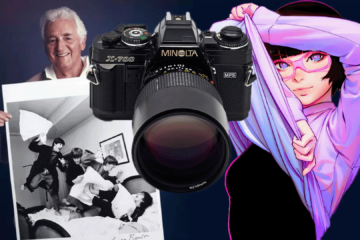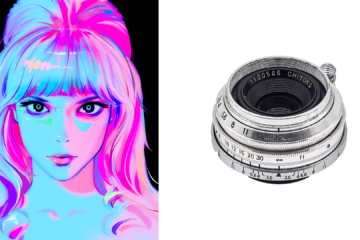Canon S 50mm 1:1.4 I vs Canon S 50mm 1:1.5 vs Canon S 50mm 1:1.8 vs Chiyoda Kogaku 50mm 1:1.8 vs Chiyoko 50mm 1:2.0 vs Minolta MD 50mm 1:1.4 – comparison

Minolta and Canon 50mm LTM lenses comparison:
- Canon S 50mm 1:1.4 I
- Canon S 50mm 1:1.5 Serenar
- Canon S 50mm 1:1.8 Serenar
- Chiyoda Kogaku 50mm 1:1.8 Super Rokkor (Minolta)
- Chiyoko 50mm 1:2.0 Super Rokkor (Minolta)
- Minolta MD 50mm 1:1.4 MD III
This comparison is correct only for conditions and equipment used for tests. An element changed – the result changed.
Tested lenses
Test description
- Camera Sony A7II (24mpx, full frame) – RAW (ARW), tripod, A-mode, ISO 100, WB fixed, SteadyShot OFF, manual focus correction for every shot
- Targets (buildings) – fixed by gravity power on the distances in more than 200 meters
- ARW post-processing – Capture One, default settings, 100% crops 300×200 px
Notes:
- Lens behavior on digital and film cameras is different
- Lens behavior on short and long distances is different
- This is just the simple resolution comparison on the long distance. But the value of the lens is based on a big list of factors. So, this test can’t help to choose a better lens but can help with an understanding of some technical aspects, which can be usable in real photography with digital cameras.
- Minolta MD 50 f/1.4 is presented here as one of the best fast 50mm lenses ever, this lens combines good technical characteristics with beautiful bokeh. Of course, tested rangefinder lenses can have better bokeh rendition, but are they balanced enough to be preferred against 25 years younger Minolta MD?
- Cropped corners and middles got an exposure correction (in RAW), otherwise it impossible to make comparisons – some lenses have really heavy vignetting.
Minolta and Canon 50mm LTM lenses comparison – sharpness/resolution
Scene preview
Test results for the center
Сonclusions (center)
First surprise: Super Rokkor 50/1.8 is the best wide open, even Minolta MD 50/1.4 is a bit worse. All competitors look enough similar at F2 except Canon 50/1.5 which is not so good as others. The same is regarding Super Rokkor 50/2, but F2 for Rokkor is fully opened, so it’s ok. At F2.8 I can see differences only with a microscope.
Test results for the middle
Сonclusions (middle)
The difference here is more noticeable.
Wide opened:
- Minolta MD 50/1.4 gives us a very nice result and can be used in real photography with no doubts. But it’s not news, we know this lens very well. All another is unusable. Ok, ok, maybe Super Rokkor is not so bad as other, but anyway it’s not enough for digital photography. The main idea – avoid to use all these LTM lenses wide opened if the object is not in the center of the frame.
For closed apertures:
- Minolta MD 50/1.4 became very good at F2 and totally sharp at F2.8
- Super Rokkor 50/1.8 – shows the best result among other LTM lenses. It is very good at F2.8 and totally sharp at F4
- Canon S 50/1.8 – number three in our rating, it is very good on F4 and totally sharp at F5.6
- Bad results: Canon S 50/1.4, Canon S 50/1.5 and Super Rokkor 50/2 – all three are the same, they became acceptable on F5.6 and sharp at F8. Actually, Canon S 50/1.4 is a little bit better on F4 – F5.6, and Super Rokkor 50/2 is worse than any other one, but this information doesn’t change the chart because I can break my mind during sorting out differences in sharpness on so closed apertures.
Test results for the corner
Сonclusions (corner)
- Big another surprise here – first place is … Super Rokkor 50/2! Wide opened at F2 it is sharper than Minolta MD 50/1.4 at F2.8. Additionally, the amount of sharpness doesn’t change significantly up to F16. It’s double strange if remember that in middle position this lens shows the worst results.
- Minolta MD 50/1.4 – second place. Very acceptable at F2.8, and sharp enough at F4. I avoid to say ‘totally sharp’ here, because not sure that such words can be used in the description of extreme corners.
- Canon S 50/1.8 – third. Actually, it is very close to second place, because it looks the same as Minolta MD 50/1.4 at F4, but not so good on F2.8.
- Fourth and fifth places: Canon S 50/1.4 and Super Rokkor 50/1.8 – both are good at 5.6 and sharp enough at 8. Differences are presented of course, but again – a microscope is needed.
- Last. Canon S 50/1.5, because it never became sharp in corners. Even at F16.
Minolta and Canon 50mm LTM lenses comparison – final conclusion:
What’s about all this mess:
Firstly: no one of tested rangefinder lenses has an IQ which can be close to the mirror fifties from 80′. Or from 70′. Even SLR-lenses 60′ should be mentioned here. If we speak about “Made in Japan” lenses, of course.
Secondly: it’s impossible to select the best rangefinder lens in the row. Yes, all these ‘LTMs’ are bad from sharpness or aberrations points of view. So it is better to make a choice based on artistic abilities or feelings in hands or exterior etc.
Anyway, that Super Rokkor 50/1.8 looks micro-nano-slightly preferable than others. And one more thing needs to be remembered – bad IQ usually follows for the good bokeh, and Canon S 50/1.5 or Super Rokkor 50/2 are the great examples of this







4 Comments
Nicho · 2022-02-16 at 22:25
What a great review this is! I can seldom find any reviews that put Canon and Minolta LTM lens together. Chiyoda 50/1.8 seems like a great unknown gem, while Supper Rokkor 50/2’s corner performance is indeed shocking. Again, thank you!
Tony · 2022-02-16 at 23:34
You are welcome )) All these lenses are worth to be remembered
Heng · 2022-03-12 at 16:40
Have you tried using these lenses for portrait in real life ? Which lens will give a softer and vintage look ,like those from the 50s ? I do not really want lenses so sharp or clinical. Thanks !
Tony · 2022-03-12 at 18:22
Hi Heng, it is not a simple question. Firstly, Canon 50/1.5 gives the most vintage look but the lack of sharpness is so big that it almost unusable for modern eyes. Chiyoko 50/2 gives the most vintage result without the lack of details from my point of view – I always recommend it as the best for old-school feeling role. But it is just my very personal opinion. What about me – I prefer Chiyoda Kogaku 50/1.8 – very balanced, but not very vintage. The best idea I think – is to start with Chiyoko 50/2 because if you don’t like it, then it’s better to abandon the idea of using rangefinder lenses and switch to SLR-lenses with vintage drawing